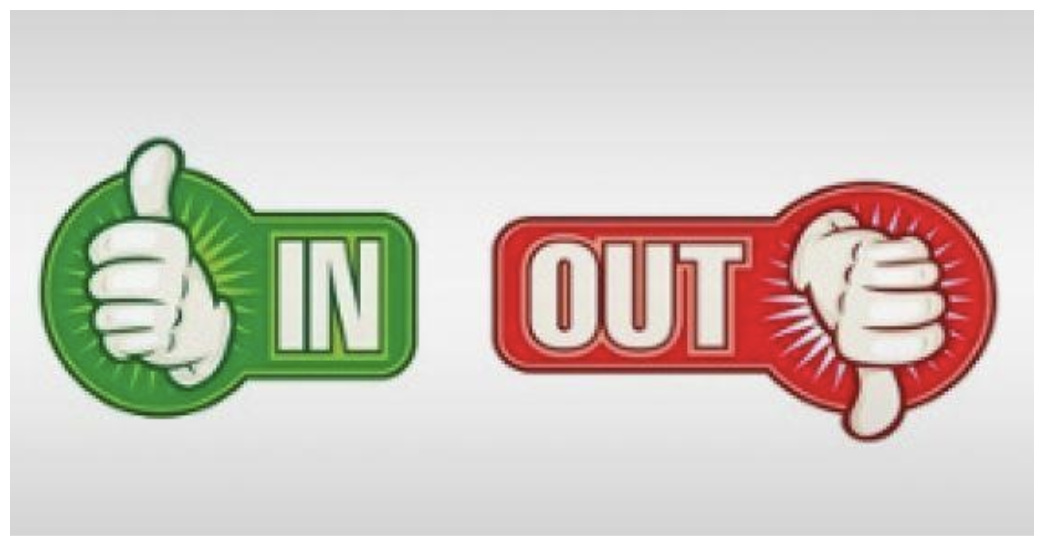ARE YOU IN OR OUT?
Don’t worry, this blog isn’t another Brexit paean (or do I mean pain?).
Instead it’s about the influential theory of social identity developed in the 1970s by social psychologists Henri Tajfel and John Turner. The theory suggests that we automatically form in groups and out groups, consciously or unconsciously. Evolutionary psychologists argue this was hardwired back on the savannah to enable us to rapidly assess the threat level from strangers or situations.
Clearly, we haven’t evolved much since then as today’s world seems more starkly binary than ever. Our choices of groups to be in or out of include Leave or Remain, ‘Anywheres’ or ‘Somewheres’, and Trump or Truth. The choice is yours but seemingly of necessity you must be in one of these groups and definitively out of the other.
More prosaically, in some situations, we switch allegiances without giving it a second thought. Are you the in-a-hurry driver, foaming at the thoughtless pedestrian diving onto the zebra crossing in front of your car, or the smug pedestrian stalking across with the hauteur of a catwalk model? The evidence is that you can be in both of those groups, just not at the same time!
Advertising is a great manipulator of in and out groupings. One of the most successful ad devices is the use of an in-grouper to sell the merits of a detergent, analgesic, or chocolate bar to an out-grouper. We, the audience, share in the moment of revelation and find ourselves buying into the in-group ourselves . . . or at least that is the theory.
Now I’ve outed the in-out group theory you’ll spot them everywhere, particularly in business. Are you on the board . . . or not? Are you in the C suite . . . or not? Are you a beneficiary of shareholder value, or just another tiresome stakeholder to be ‘valued’ and ‘informed?’ In the rat race are you in the owner group or just a jockey? In short are you in the know, or not.
This in-out group perspective helped us to understand the apparent disengagement of Millennials with the workplace. Their world is one where information and ideas have been democratised by the internet, with fluid in-groups based on friendship and shared interests. The hierarchical nature of most workplaces, with restricted access to information and rigid in and out groups based on location, department and time served, are alien and alienating to them.
At the heart of Sagency ‘s theory of Emotional Ownership© is our belief that to have a thriving business you need as many of your employees as possible in the in-group. And to have true Emotional Ownership© of their workplace, the in group must be focused on a shared sense of purpose. This will in turn deliver greater productivity borne out of greater happiness and commitment. Your best people will stay and recommend your firm to others. The brightest and the best will be clamouring to get in. And your customers will be happier too.
In our experience, however, very few companies define their purpose and those that do rarely rise above the level of platitudes and clichés.
Microsoft is one example of creating exceptional Emotional Ownership©. They have re-purposed (pun intended) Maslow’s Hierarchy of Needs to drive their talent strategy and focus on the 5 Ps, with purpose at the pinnacle.
It’s perhaps no surprise that Microsoft’s, ‘would you recommend working at Microsoft to a friend’ score is 85%, and that it has regained its place as the world’s most valuable company, which it lost to Apple in 2010.
(1) Source: Glassdoor
(2) Source: The Telegraph 28.11.18








